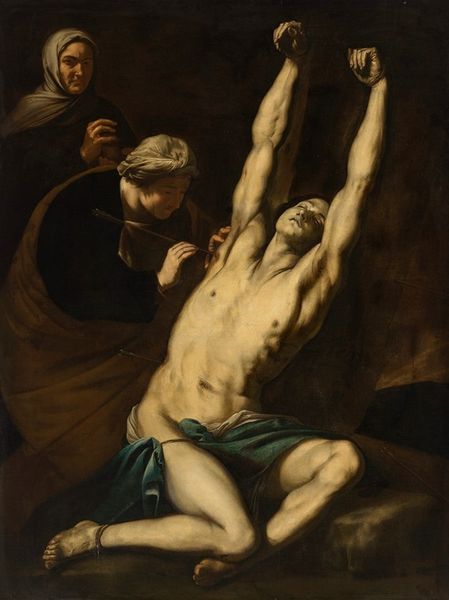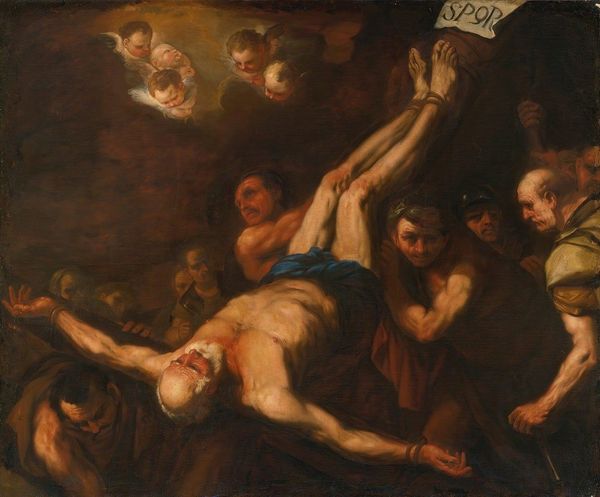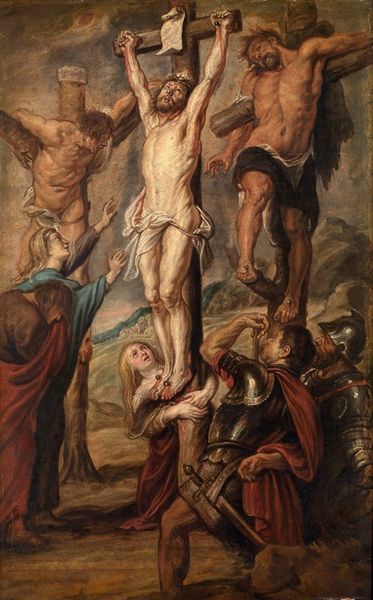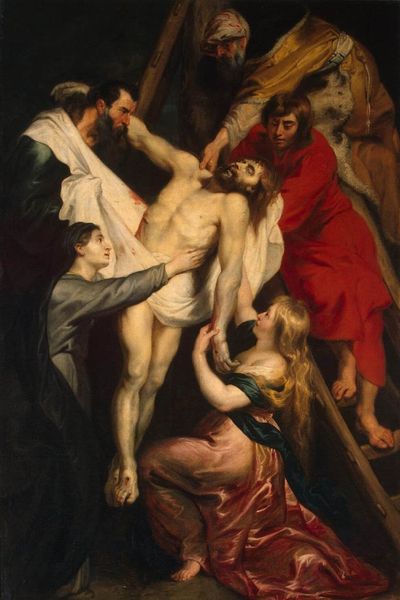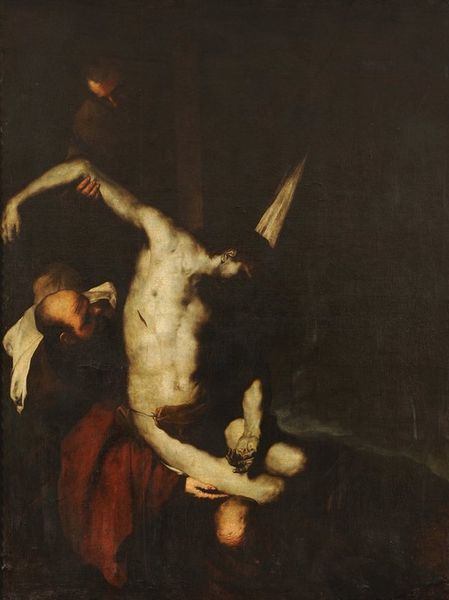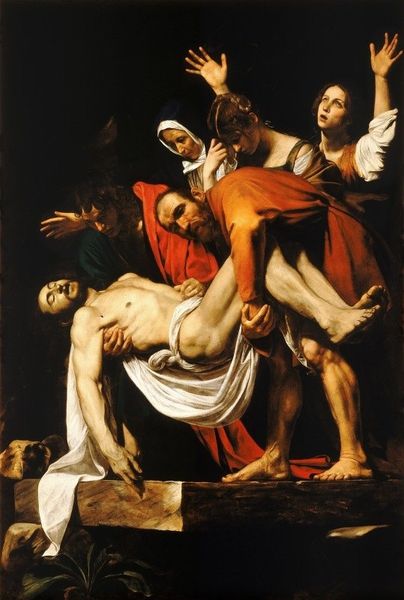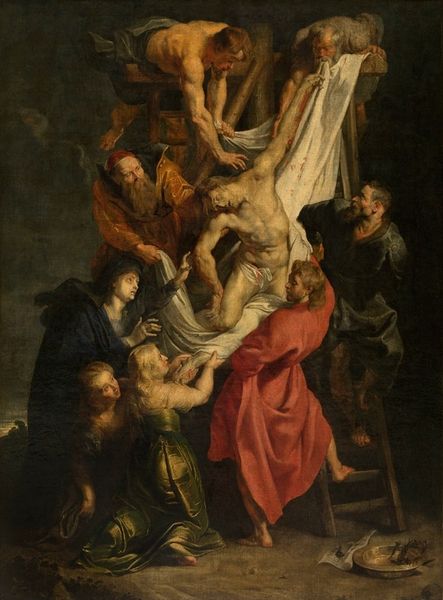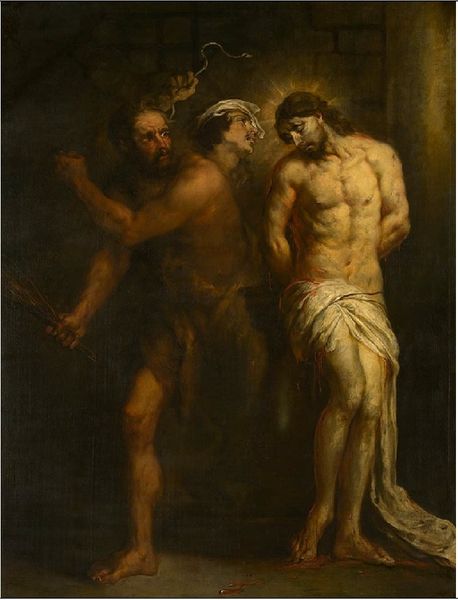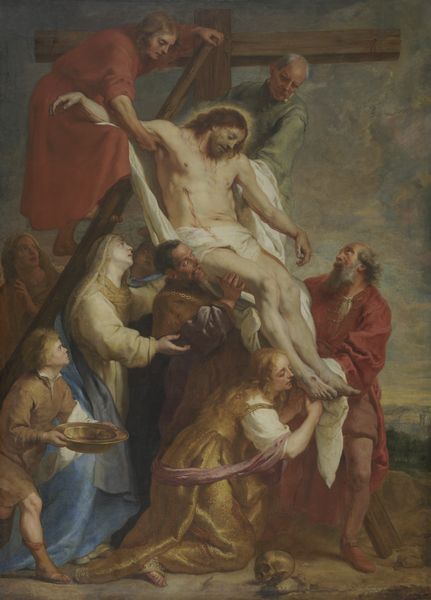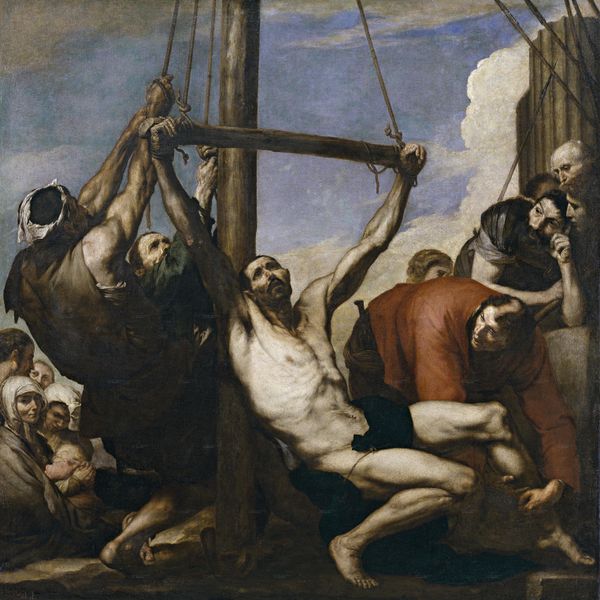
oil-paint
#
narrative-art
#
baroque
#
oil-paint
#
figuration
#
oil painting
#
history-painting
#
academic-art
#
italian-renaissance
Copyright: Public Domain: Artvee
Curator: This oil painting is Jusepe de Ribera’s "Martyrdom of Saint Bartholomew," created around 1644. It’s… intense. Editor: My gut reaction? This is a visceral and deeply unsettling piece. The brutal realism is confronting. Curator: Ribera doesn’t shy away, does he? He uses a classic Baroque approach here. Dramatic light and shadow emphasize the torturers, the instruments, the saint’s agony. But what does this graphic depiction achieve? Editor: Well, it speaks to power structures and the often violent suppression of dissent. Saint Bartholomew, according to tradition, was flayed alive for his faith. This painting lays bare the physical and ideological violence inherent in religious persecution. I can’t help but read into this painting through the lenses of race and class oppression. How have these types of violent displays functioned to punish those outside of societal norms? Curator: I hear you. But, thinking about Ribera, there's this push and pull in his work. On the one hand, he’s capturing these really unsettling scenes. But then, with Bartholomew's face tilted towards the light, is Ribera also trying to evoke the spiritual, maybe even the beautiful, amid the horror? What is left to those whose bodies, beliefs and ways of being are subjected to daily violences? Editor: Absolutely, the interplay of light and dark, a hallmark of Baroque painting, here serves as a metaphor for the struggle between faith and doubt, hope and despair, justice and violence. In moments of profound cruelty, hope can seem incredibly slim to non existent, this tension is where transformation can either rise, or completely be suffocated. We see how quickly dominant powers, ideologies, and norms use brutality to exert and maintain their control. Ribera has laid this struggle right before us, no holding back. Curator: It’s not just about the drama. Look at the individual faces, especially the tormentor with the knife. Ribera's capturing this strange mixture of effort and… almost glee? Or is it a kind of crazed determination? You feel like you're glimpsing the darkest parts of the human psyche. The very same ones we see across eras perpetuating unspeakable violence toward one another. Editor: Precisely. I believe this painting serves as a timeless reminder to the cost of complacency and the continued urgency of resisting those forces of oppression in all their contemporary forms. Curator: It really makes you think, doesn’t it? Editor: More like keeps me up at night. And that’s important.
Comments
No comments
Be the first to comment and join the conversation on the ultimate creative platform.

